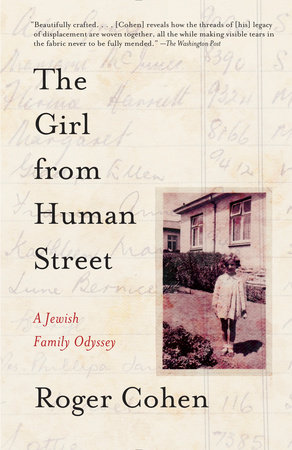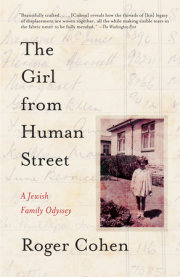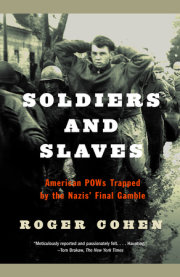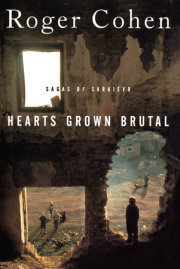On May 7, 1945, my uncle, Capt. Bert Cohen of the Dental Unit of the Sixth South African Armored Division, Nineteenth Field Ambulance, made the following entry in his war diary:
After lunch Hilton Barber lent me his jeep and I scudded away on a delightful jaunt. We traveled through twisting country byways until the town of Monza. There we followed route 36 northward to Lecco. As we bypassed the town we got our first view of the famous Alpine lakes . . . an azure strip of unbelievable blue flanked by great mountains. . . . We passed through several icy tunnels and the beauty of the scene grew more breathtaking as we neared Bellagio, a wonderful village nestling in the fork of the lake beneath the majestic mountains. . . . A drove of little boys clambered onto the jeep, an incredible number appeared from all over the place. At one stage Wilson counted 21 of them on the jeep. Bellagio was indeed delightful. It was while there that we heard that the war was over, a report that was subsequently verified as we drove on down Lake Como to Como. . . . All along the road from Bellagio throngs had lined each village street and flowers in profusion had been tossed into the jeep.
So, in Bellagio, right here, feted by children and flowers, my uncle’s war ended. “GUERRA FINITA!!!”—“WAR OVER!!!”—he exulted in his diary. He was twenty-six and far from home. As a young dentistry graduate from the University of the Witwatersrand, he had enlisted in Johannesburg on January 15, 1943. After training, he flew by stages to Egypt to join the Allies’ North African campaign. From there, in April 1944, he embarked for Italy, on the lowest deck, landing in Taranto, near the heel of Italy’s boot. Churchill had called Italy “the soft underbelly of the Axis,” but resistance to the Allied assault was stern. Bert’s progress northward through Naples, Rome, and Florence to Bellagio was no sunlit Italian passeggiata. The winter of 1944 was spent encamped high in the freezing Apennines facing a German line stretching across the country from Pisa to Rimini. He filled teeth in freezing, improvised dental surgeries.
Bert had to battle through the German lines. At Finale Emilia, north of Modena, on April 24, 1945, he was ordered into a bend in the Penaro River where a Nazi column was trapped. Skiet gemors—Shoot the garbage—was a rough guide to his Afrikaner commander’s battle code. An artillery battery pulverized the enclave. Wrecked vehicles smoldered. Wounded horses, nostrils flared in gasping horror, bayed—a terrible sound. In the carnage, ammunition exploded and tires burst. The stench of roasted flesh and putrefaction pervaded the air. Intestines of gutted animals ballooned from their carcasses. A squad of South African infantry marched through the ruins, bringing a bullet of mercy to animals that still agonized. One dead German in particular caught Bert’s eye: a blond, square-jawed young man with a long straight nose, hair flecked with blood and smoke, legs twisted grotesquely, abdomen ripped open, coils of gut spilling through a ragged gash into the dust, sightless blue eyes gazing at infinity. Beside the corpse lay scattered letters from the soldier’s mother in Hamburg. She wrote about Der Angriff, the Allied bombardment of the city that killed more than 42,000 people. Uncertain what to do, Bert returned the letters to the dead man’s pocket before grabbing a few ampoules of morphine found in an abandoned, ammunition-filled German ambulance.
That single German corpse among the more than 600,000 casualties of the Italian campaign haunted my uncle for the rest of his life. Bert dwelt on him as if this death were his responsibility, or as if he, a Jew from South Africa, might somehow have brought this handsome young man, Hitler’s model Aryan, back to the life denied him. The dead man inhabited his dreams. Bert thought that he should have kept the letters, for some reason, perhaps to return them to a bereaved mother in Hamburg. He was a link in a circle that never closed.
Bellagio also marked him. He returned four days after his first visit, on May 11, 1945, and was billeted for a week in the magnificent Villa Gerly, on the banks of the lake. His diary records a lunch that day at Silvio’s restaurant. “We lunched sumptuously on fresh trout and fresh butter,” Bert wrote. “Such food was so novel and so exciting to our palates long jaded by M and V that I for one ate far too much.” Canned meat and vegetables (M and V), tasting of neither, were the staple military diet. After lunch Bert dozed off on the grass, a siesta troubled only by ants. In the late afternoon he decided to go for a swim:
We rowed out into the middle of the lake and there I plunged in. The water was icy cold a few feet below the surface. About halfway I realized I had overestimated my swimming ability and underestimated the distance. The swim turned into a horrifying ordeal. I was fighting panic, not with complete success. It is one thing to be able to take a grip if you can stop and weigh up the situation but quite another if you can’t stop to collect your calm. I couldn’t stop. It would have been better to have doggy paddled and relaxed but driving panic made my haste frantic. I was exhausted when I reached the shore. My heart was pounding and my head was bursting with pain. It was quite the most unnerving and terrifying experience I have had since I left home.
In this way, four days after the end of the war, Captain Cohen almost lost his life in Bellagio. He would have gone out in a sumptuous manner, after a lunch of delicious fish, in the midst of a beautiful lake, beneath the mountains, a few hundred yards from the Punto Spartivento. It is a good thing, however, that he did not encounter a watery North Italian grave. What a waste, people would have said, to die when the war was over. As if the war being over made any difference to the waste and the grief. The thing about life’s chains, and the lines of memory that eddy along them, is you never know when they may get broken—in a mountainous trench, on a bend in the river, or three hundred meters down in a sunlit lake after a good lunch celebrating peace.
Excerpted from The Girl from Human Street by Roger Cohen. Copyright © 2015 by Roger Cohen. Excerpted by permission of Knopf, a division of Random House LLC. All rights reserved. No part of this excerpt may be reproduced or reprinted without permission in writing from the publisher.
Copyright © 2015 by Roger Cohen. All rights reserved. No part of this excerpt may be reproduced or reprinted without permission in writing from the publisher.











